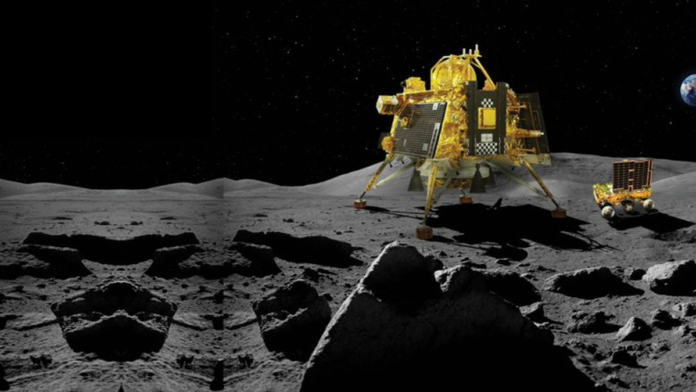India scripted history on 23 August 2023 as the Chandrayaan-3 lander module successfully landed on the Moon’s South Pole. With this, India became the first country to achieve the historic feat.
This successful soft landing on the moon made India only the fourth country in the world to achieve the feat after the United States, former Soviet Union and China.
Prime Minister of India Narendra Modi, addressing ISRO scientists virtually from Johannesburg, said India made a resolve ‘on the Earth and fulfilled it on the Moon’. “India’s successful Moon mission is not India’s alone… Our approach of one earth, one family one future is resonating across the globe… Moon mission is based on the same human-centric approach. So, this success belongs to all of humanity” he said.
Prime Minister Modi watched the landing live from Johannesburg, South Africa where he is currently participating in the BRICS summit.
Political leaders from across party lines took to X (formerly Twitter) to congratulate India and hail the successful landing on Moon’s South Pole.
The Chandrayaan-3 mission was launched on 14 July from Sriharikota in India. A successful landing on the Moon’s south pole on August 23 is not only a boost to India’s prestige but is expected to launch the country’s burgeoning space industry to new heights.
Under Prime Minister Narendra Modi, India is looking to open its space sector to foreign investment as it targets a five-fold increase in its share of the global launch market within the next decade.
The shares of aerospace and defence firms and those related to the two sectors rallied as Chandrayaan-3 was set to touch down on the lunar surface. India’s current space market is worth around US$8 billion and has been growing at about 4% annually in the last few years, compared to 2% globally.
India’s space economy is likely to touch US$40 billion by 2040 and a successful Chandrayaan-3 mission may help India achieve the target much sooner as more countries are expected to approach India for launching their satellites.
India’s space sector could capitalise on a reputation for cost-competitive engineering. The Indian Space Research Organisation (ISRO) had a budget of around just US$74 million for the mission. India is looking to follow NASA’s playbook in opening the space sector to private money.
When the Indian Space Research Organisation (ISRO) was founded in 1969, its primary goal was fairly simple – to design and launch satellites for forecasting storms, mitigating floods and bolstering telecommunications in the country.
In the beginning, India’s space missions were carried out with the help of other countries and it wasn’t until the 1990s that ISRO began to design and launch satellites on its own. Since then the country has achieved significant milestones to emerge as a leader in space missions.
In 2009, India sent a robotic orbiter called Chandrayaan-1 to the moon, which helped discover that water ice can exist on the lunar surface. In 2014, India successfully put a satellite into orbit around Mars, becoming the fourth nation to do so.
In 2017, India created history by successfully launching 104 satellites on a single mission, overtaking the previous record of 37 satellites launched by Russia in 2014. India will soon be launching missions to monitor and observe the Sun (Aditya -L1), Venus orbiter (Shukrayaan-1), Mars orbiter (Mangalyaan-2), lunar lander, uncrewed spacecraft flight tests (Gaganyaan) all leading to a manned space flight.

